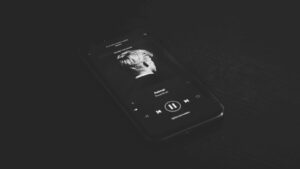In the digital age, music streaming services have revolutionized how we enjoy our favorite tunes. Spotify, a leader in this space, offers users an expansive library and personalized playlists. But what happens when a beloved playlist accidentally disappears? Panic might set in, but there’s no need to worry—Spotify’s got a solution.
Spotify’s playlist recovery feature is a lifesaver for those who accidentally delete their carefully curated collections. This handy tool ensures that your favorite tracks are never lost forever, allowing you to restore deleted playlists with just a few clicks. Whether it’s a workout mix or a nostalgic throwback, users can effortlessly bring their playlists back to life. Understanding how to recover playlists not only saves time but also enhances the Spotify experience. Users can explore the platform’s features more confidently, knowing that their musical treasures are safe.
Understanding Spotify’s Playlist Recovery Feature
 Spotify’s playlist recovery feature ensures users can restore deleted playlists. Whether removal was accidental or intentional, users can easily recover lost playlists. This functionality is accessible via Spotify’s web interface. Users log in to their account, navigate to ‘Account Overview’, and select ‘Recover Playlists’. Here, they find a list of all deleted playlists with the option to restore them. Once restored, playlists appear in the Spotify library. It’s an intuitive process that safeguards curated music collections. Users gain peace of mind knowing their playlists aren’t permanently lost.
Spotify’s playlist recovery feature ensures users can restore deleted playlists. Whether removal was accidental or intentional, users can easily recover lost playlists. This functionality is accessible via Spotify’s web interface. Users log in to their account, navigate to ‘Account Overview’, and select ‘Recover Playlists’. Here, they find a list of all deleted playlists with the option to restore them. Once restored, playlists appear in the Spotify library. It’s an intuitive process that safeguards curated music collections. Users gain peace of mind knowing their playlists aren’t permanently lost.
Spotify Recovery Playlist
Spotify users can restore deleted playlists quickly using the platform’s built-in recovery feature. This section explains the process in detail, ensuring users can manage their playlists effectively.
Accessing Account Settings
Users must access their account settings via Spotify’s web interface. First, they log into their Spotify account. Then, they navigate to the ‘Account Overview’ page from the user menu. This section acts as the gateway to various account management options, including playlist recovery.
Using the Playlist Recovery Option
 In the ‘Account Overview’, users find the ‘Recover Playlists’ option. Clicking this option displays a list of deleted playlists with corresponding deletion dates. To recover a playlist, users select ‘Restore’ next to the desired playlist. The playlist then reappears in the user’s library with all original tracks intact. This seamless process ensures playlists are never lost permanently, offering peace of mind for users.
In the ‘Account Overview’, users find the ‘Recover Playlists’ option. Clicking this option displays a list of deleted playlists with corresponding deletion dates. To recover a playlist, users select ‘Restore’ next to the desired playlist. The playlist then reappears in the user’s library with all original tracks intact. This seamless process ensures playlists are never lost permanently, offering peace of mind for users.
Common Issues and Solutions
Common challenges can arise when attempting to recover playlists on Spotify. Identifying these issues and understanding their solutions is crucial for a seamless music experience.
Troubleshooting Unrecoverable Playlists
Users might sometimes find that certain playlists don’t appear under the ‘Recover Playlists’ section. This often occurs when trying to recover a playlist older than 90 days, as Spotify only retains deleted playlists for this period. If the playlist isn’t found, users should verify they have logged into the correct account since wrong account credentials might show an empty recovery list. Checking for duplicate accounts or ensuring the playlist was not merely hidden can also resolve confusion.
Contacting Spotify Support
 When playlist recovery attempts are unsuccessful, contacting Spotify Support becomes necessary. Users can access assistance directly through the Spotify app by navigating to the ‘Support’ section in the settings. Here, they can receive guidance by selecting the relevant issue category. For more direct support, users may visit Spotify’s official Contact page, where they can initiate a chat with a representative or fill out a contact form detailing their playlist issues. This ensures comprehensive support and helps in exploring additional recovery options.
When playlist recovery attempts are unsuccessful, contacting Spotify Support becomes necessary. Users can access assistance directly through the Spotify app by navigating to the ‘Support’ section in the settings. Here, they can receive guidance by selecting the relevant issue category. For more direct support, users may visit Spotify’s official Contact page, where they can initiate a chat with a representative or fill out a contact form detailing their playlist issues. This ensures comprehensive support and helps in exploring additional recovery options.
Tips for Managing Playlists Efficiently
To maximize the benefits of Spotify’s playlist recovery feature, users should adopt proactive playlist management practices. Regularly backing up playlists by exporting them to third-party apps or keeping a list of favorite tracks can safeguard against potential issues. It’s also wise to periodically review and organize playlists to keep them fresh and relevant. By staying organized and familiar with Spotify’s features, users can enjoy a seamless music experience without the worry of losing cherished playlists. Embracing these strategies ensures that music lovers can explore and enjoy Spotify’s vast library with confidence and ease.

